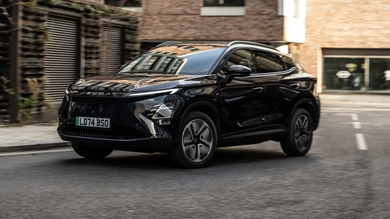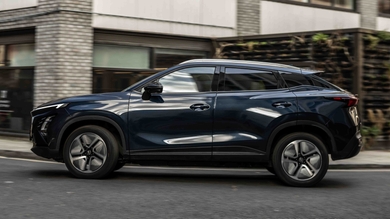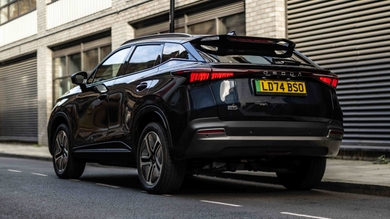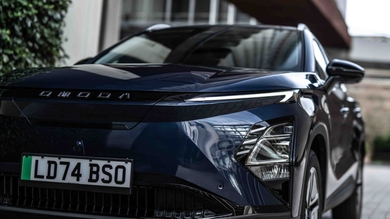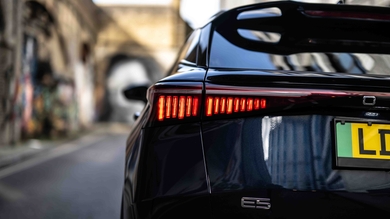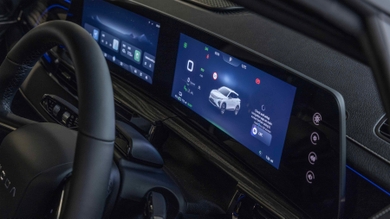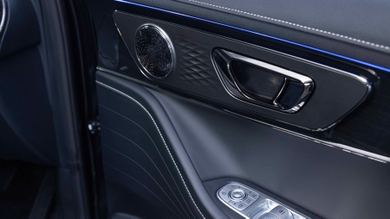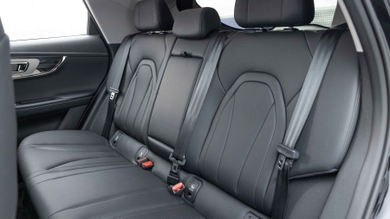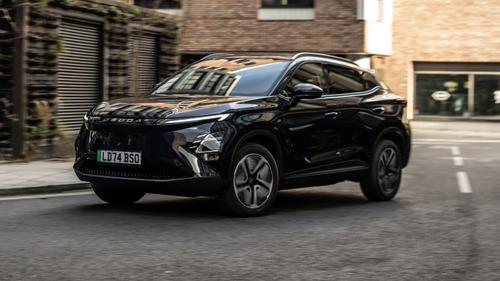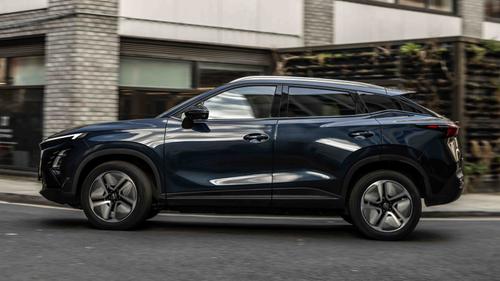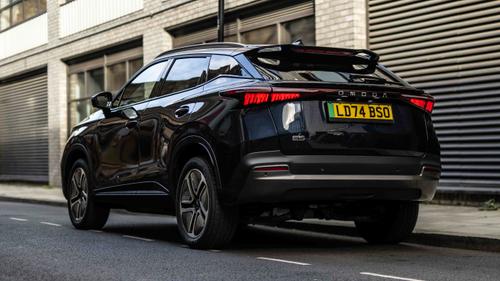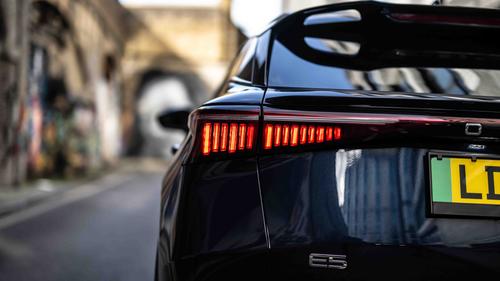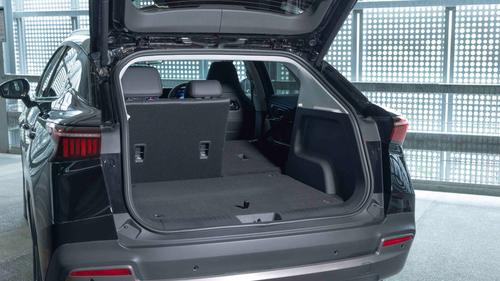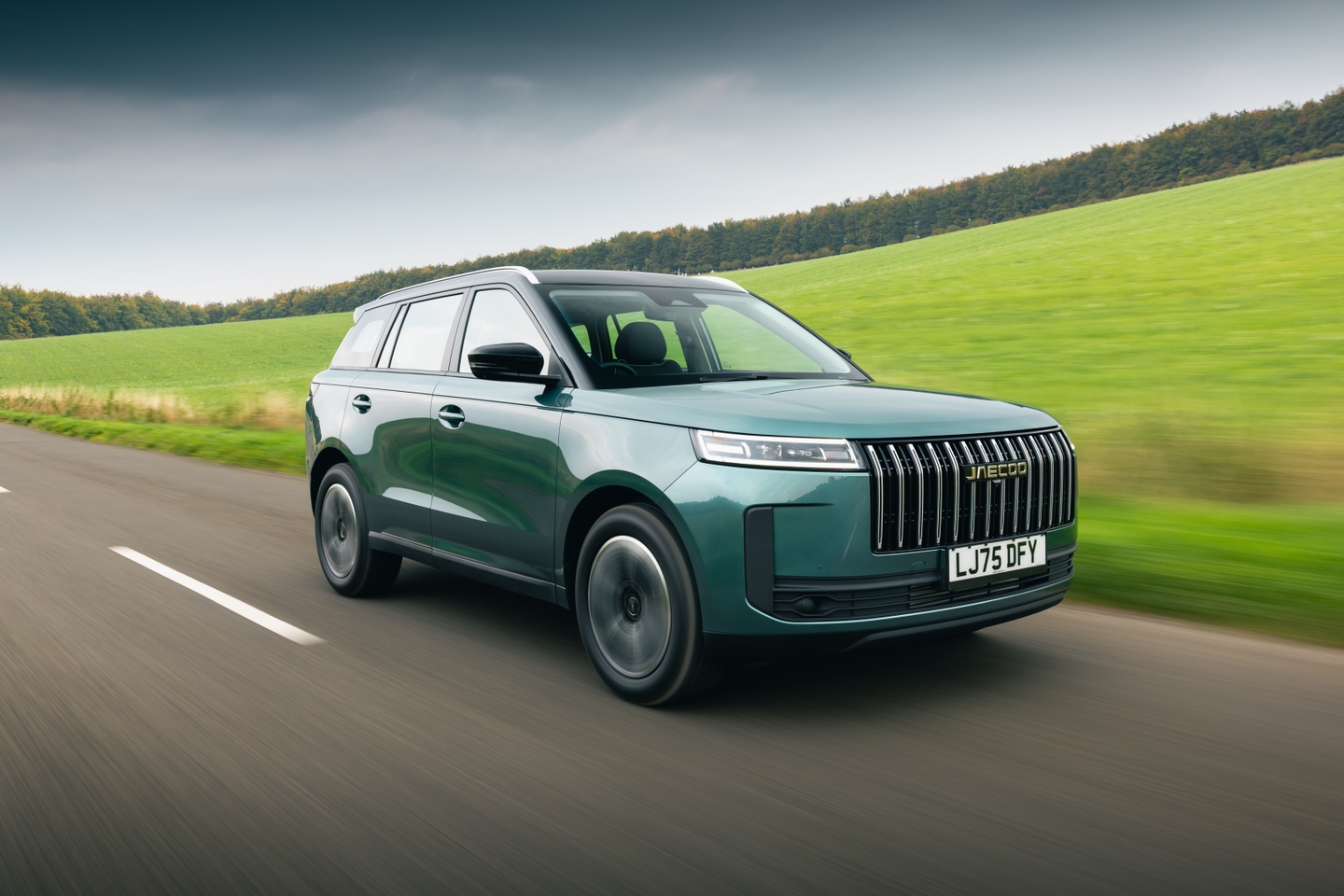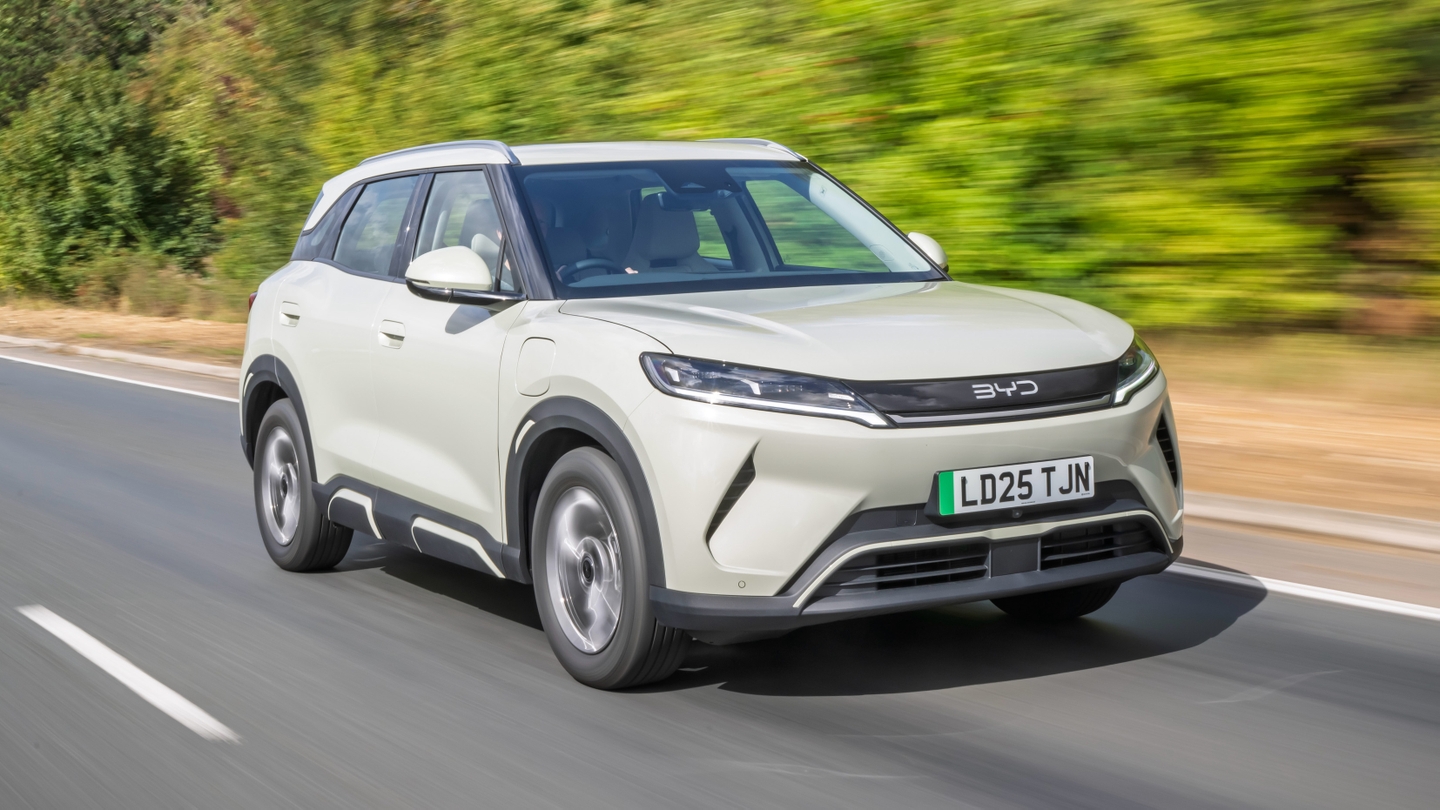
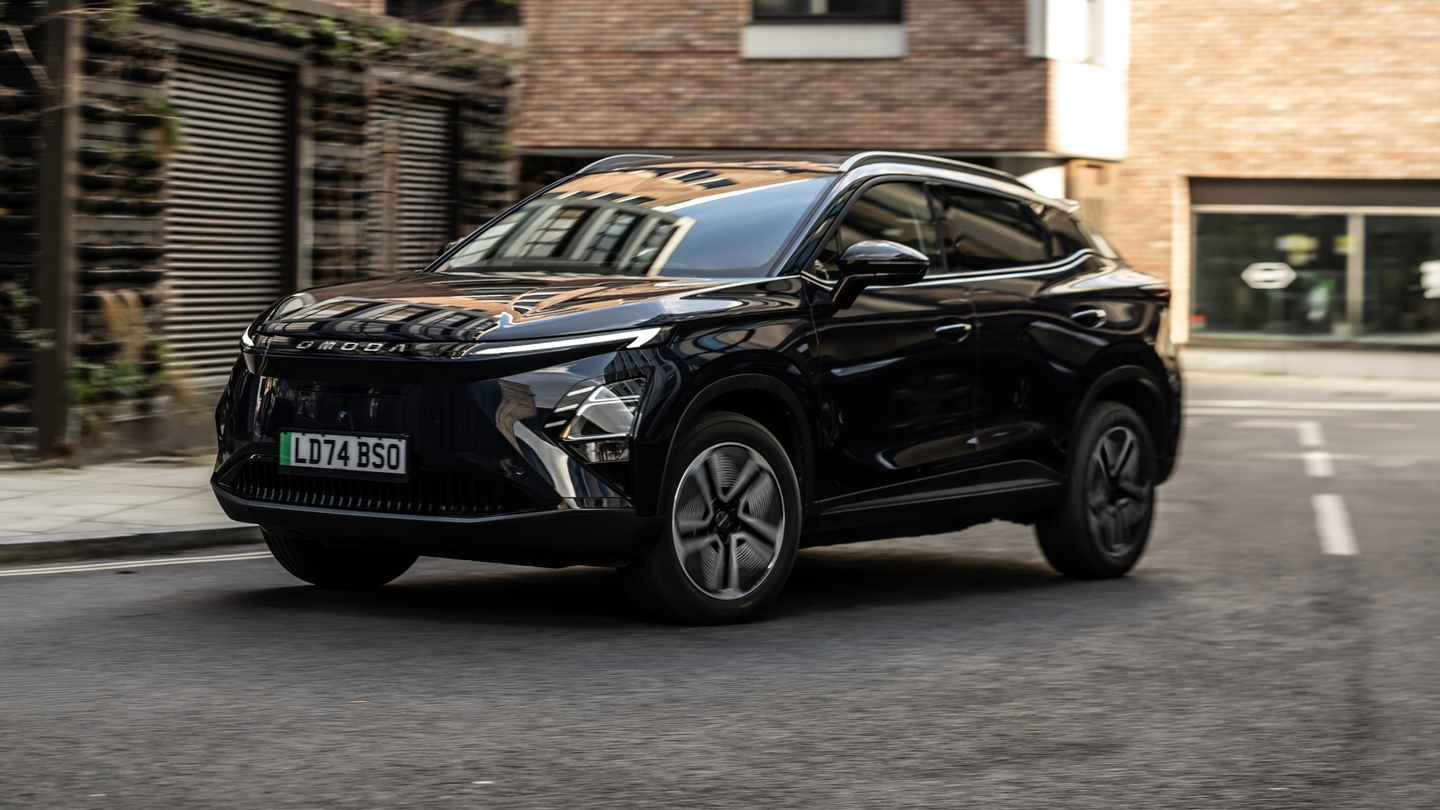
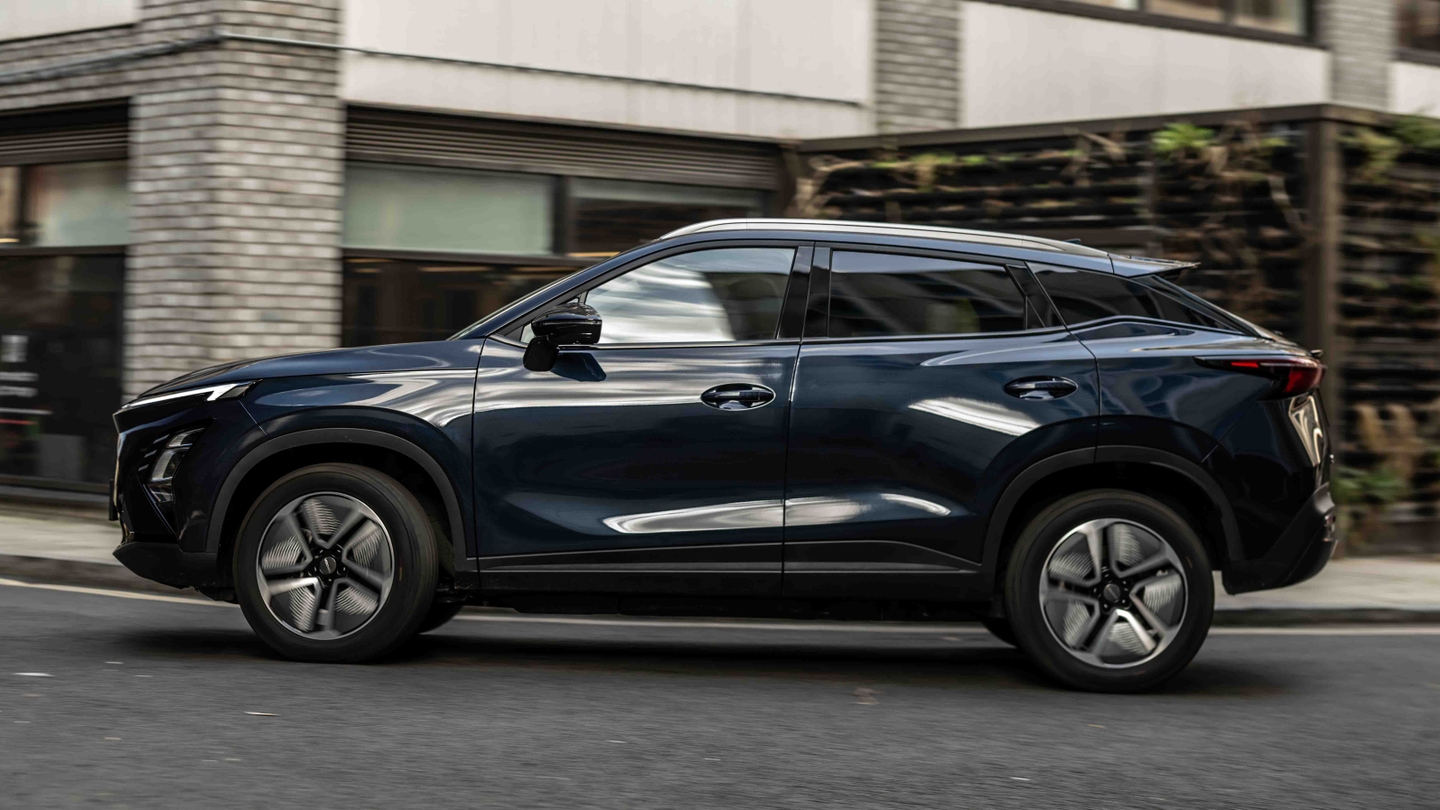
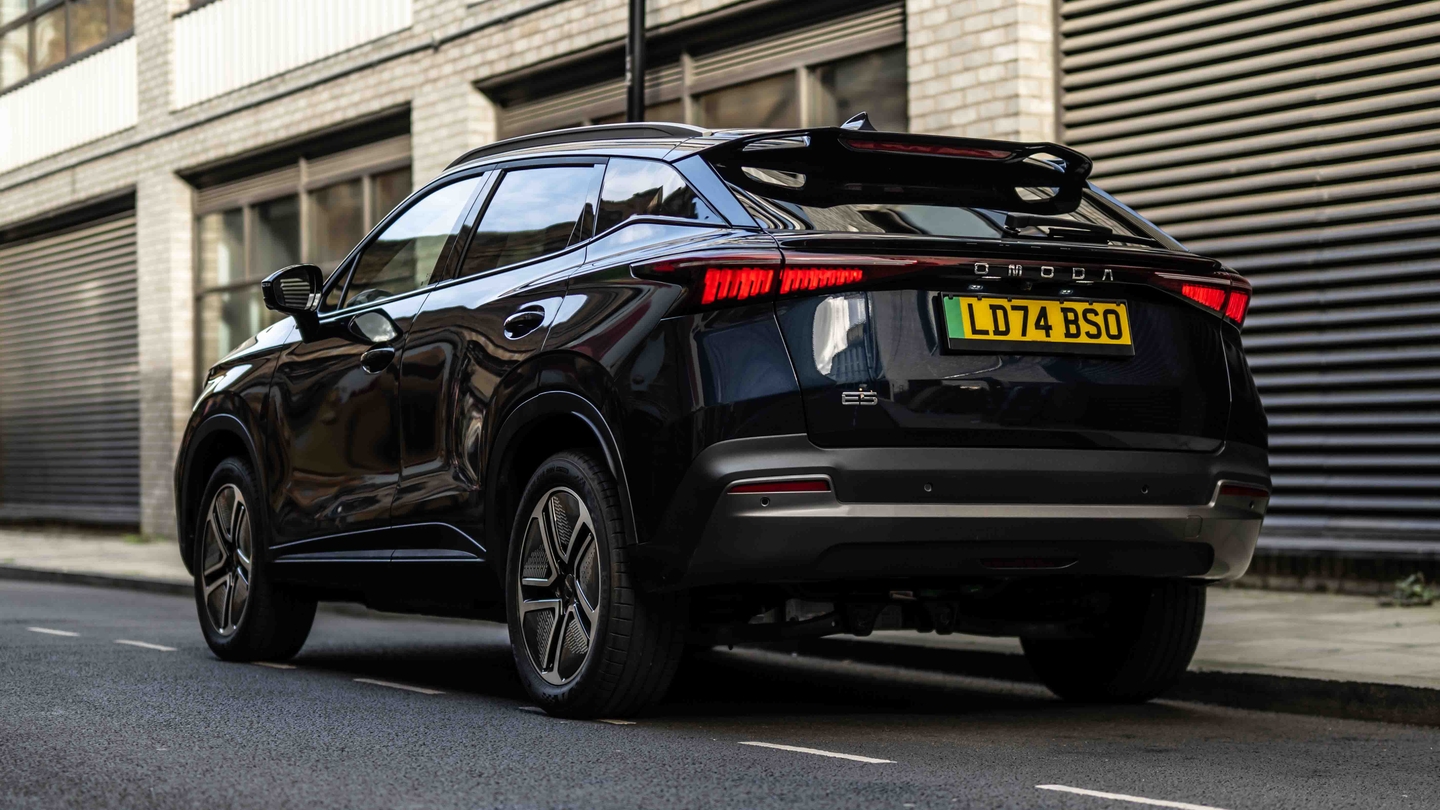
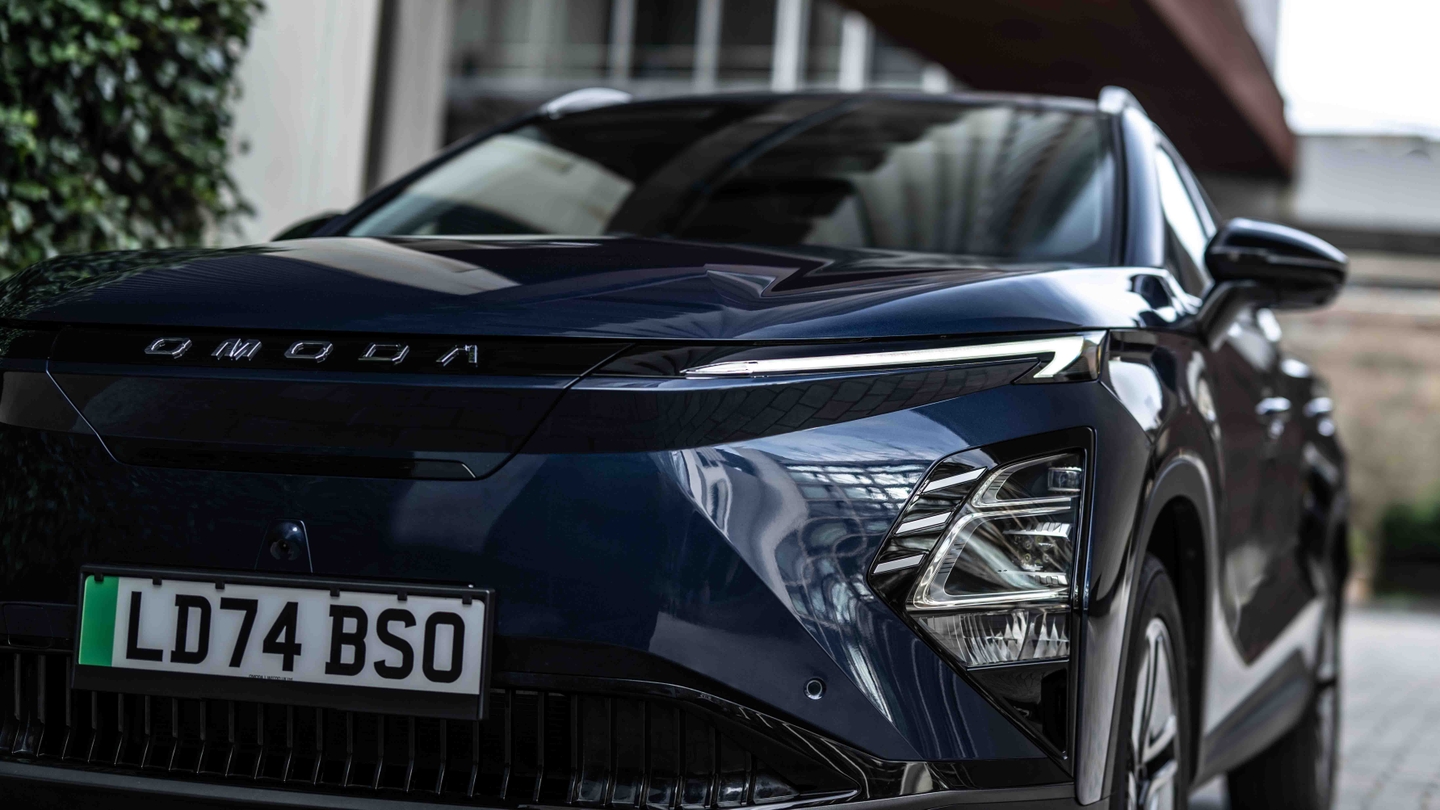
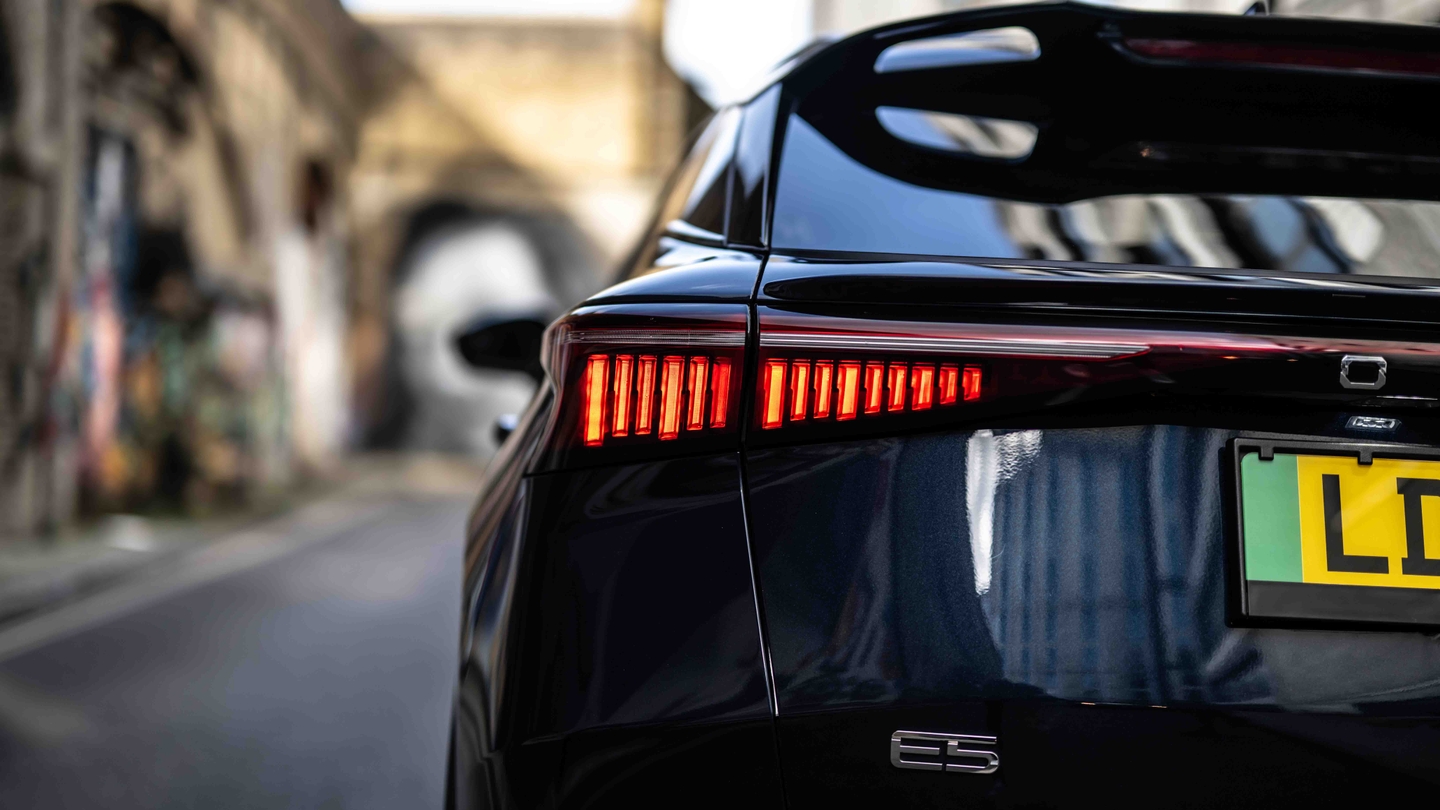
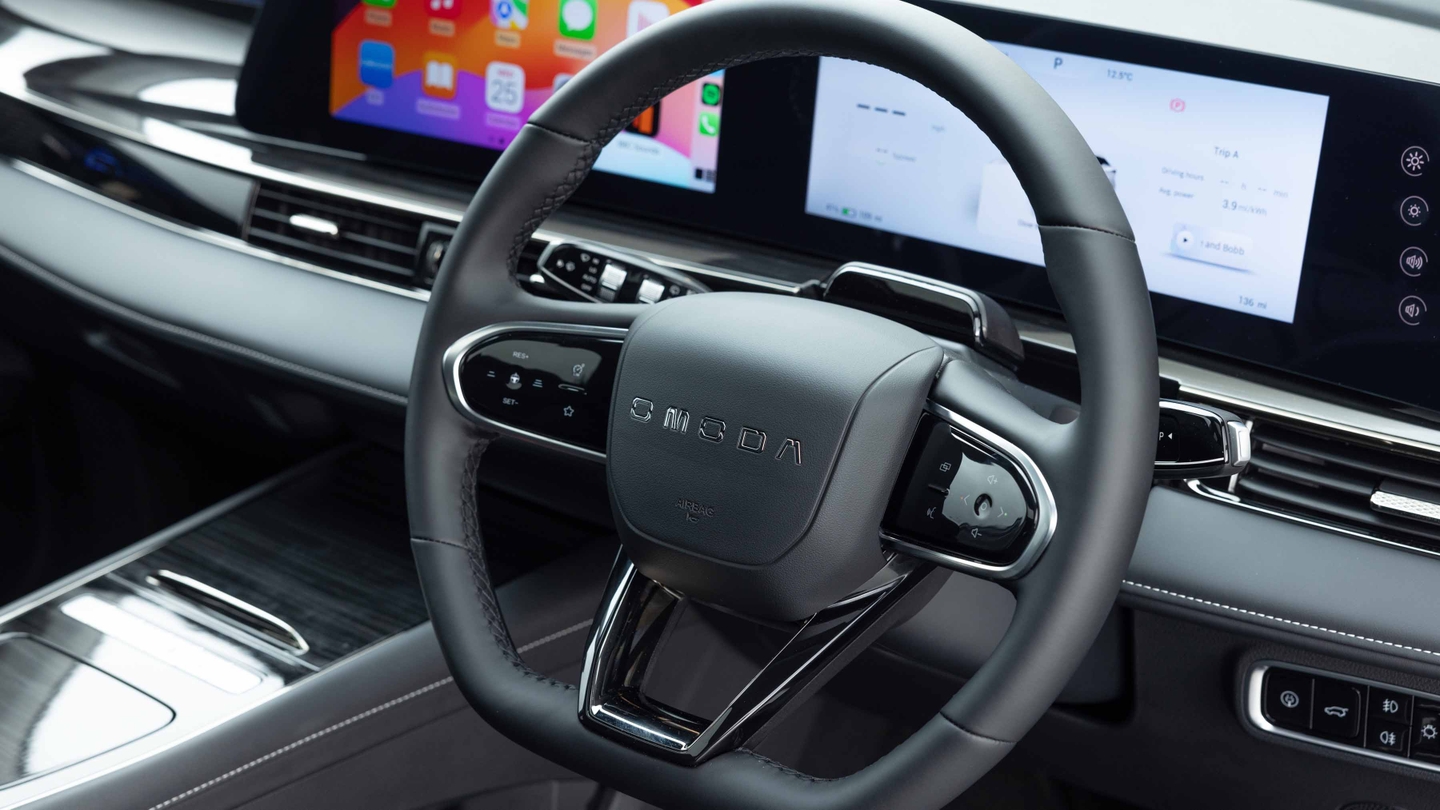
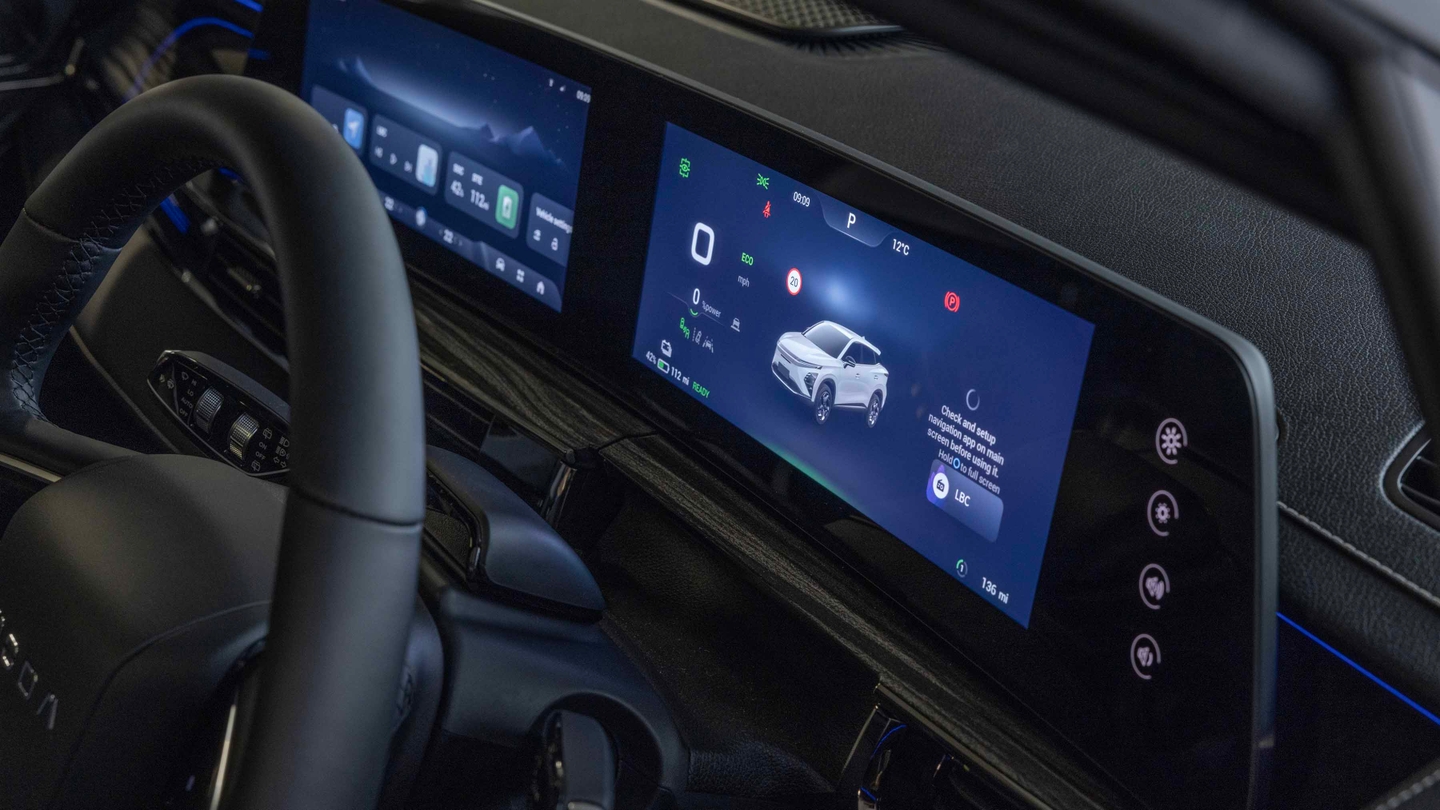

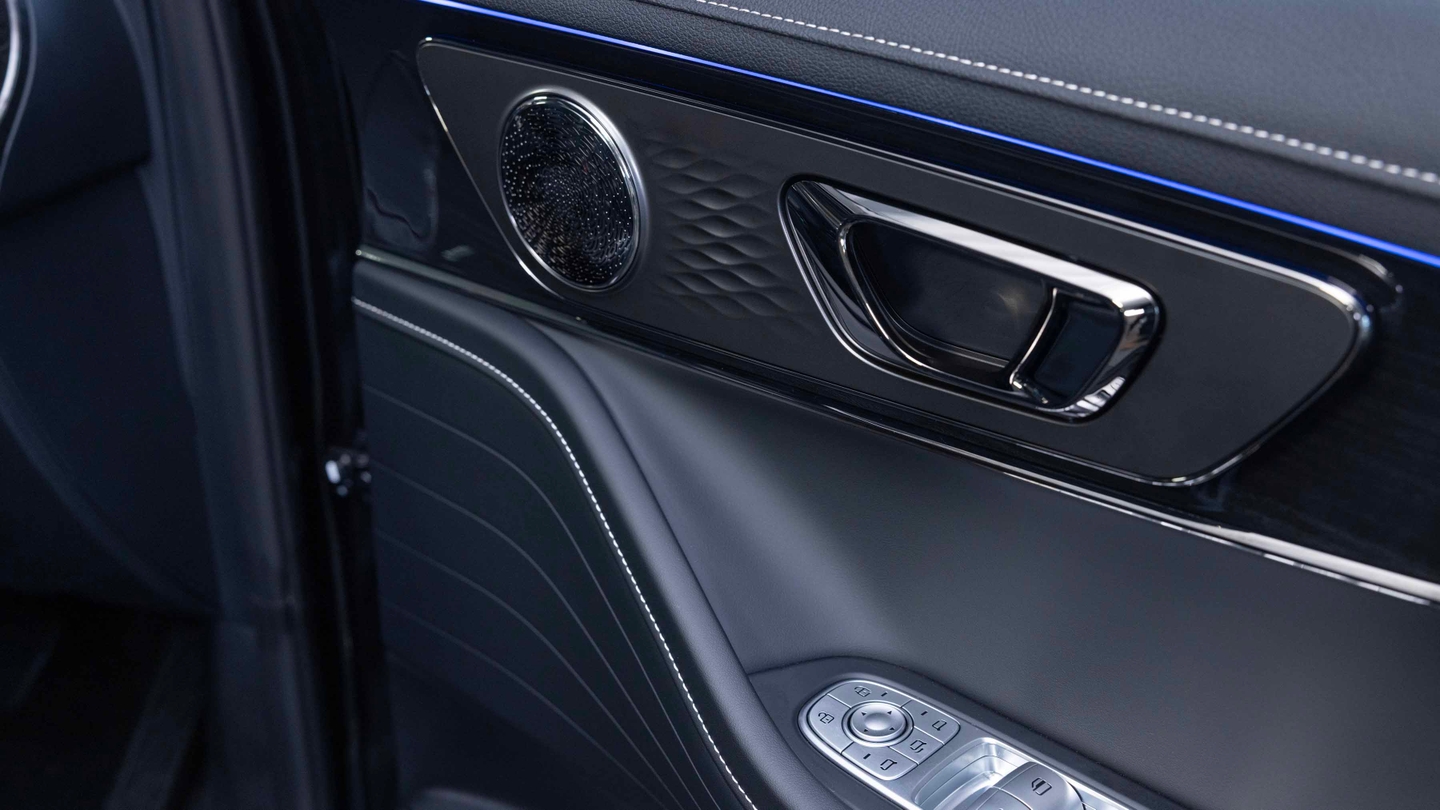
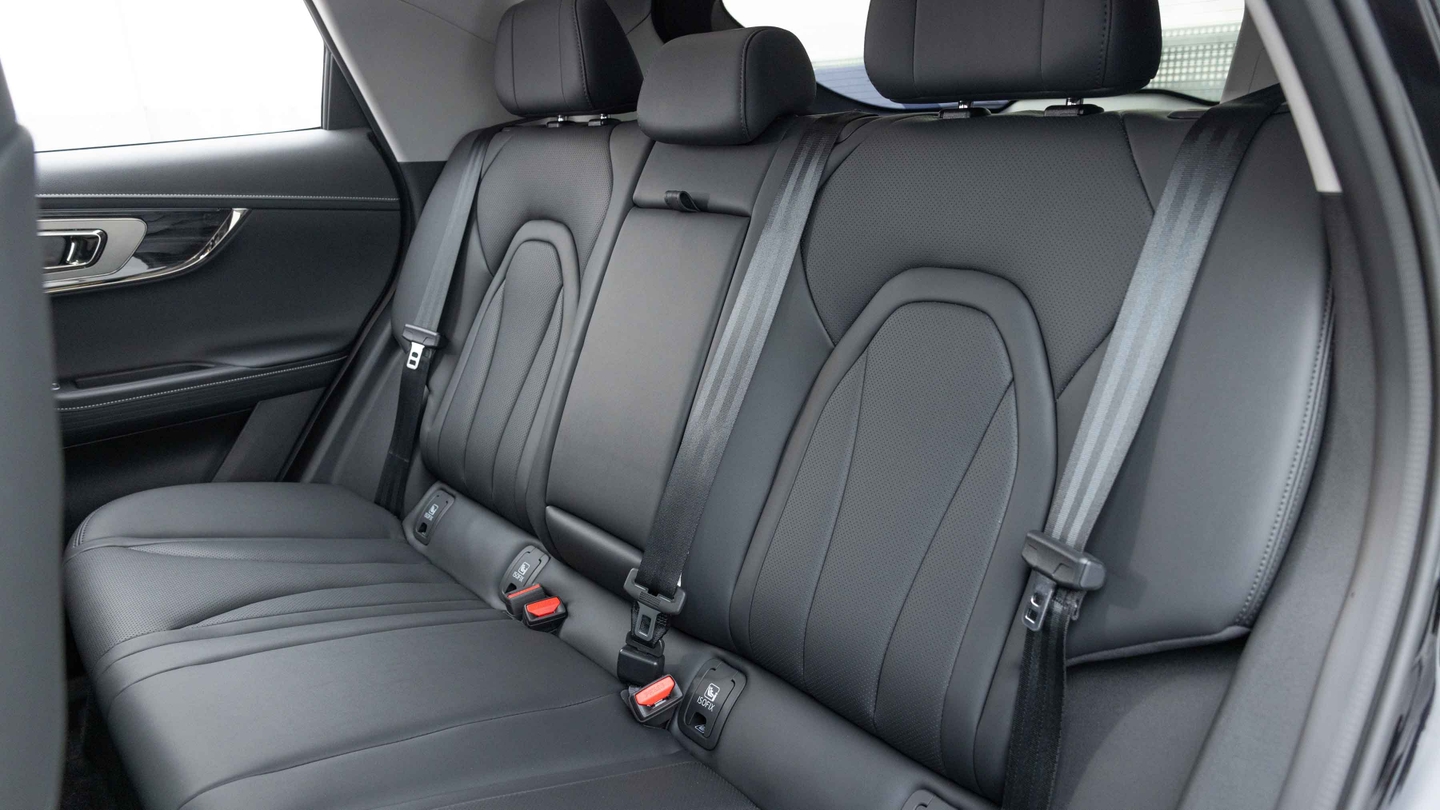
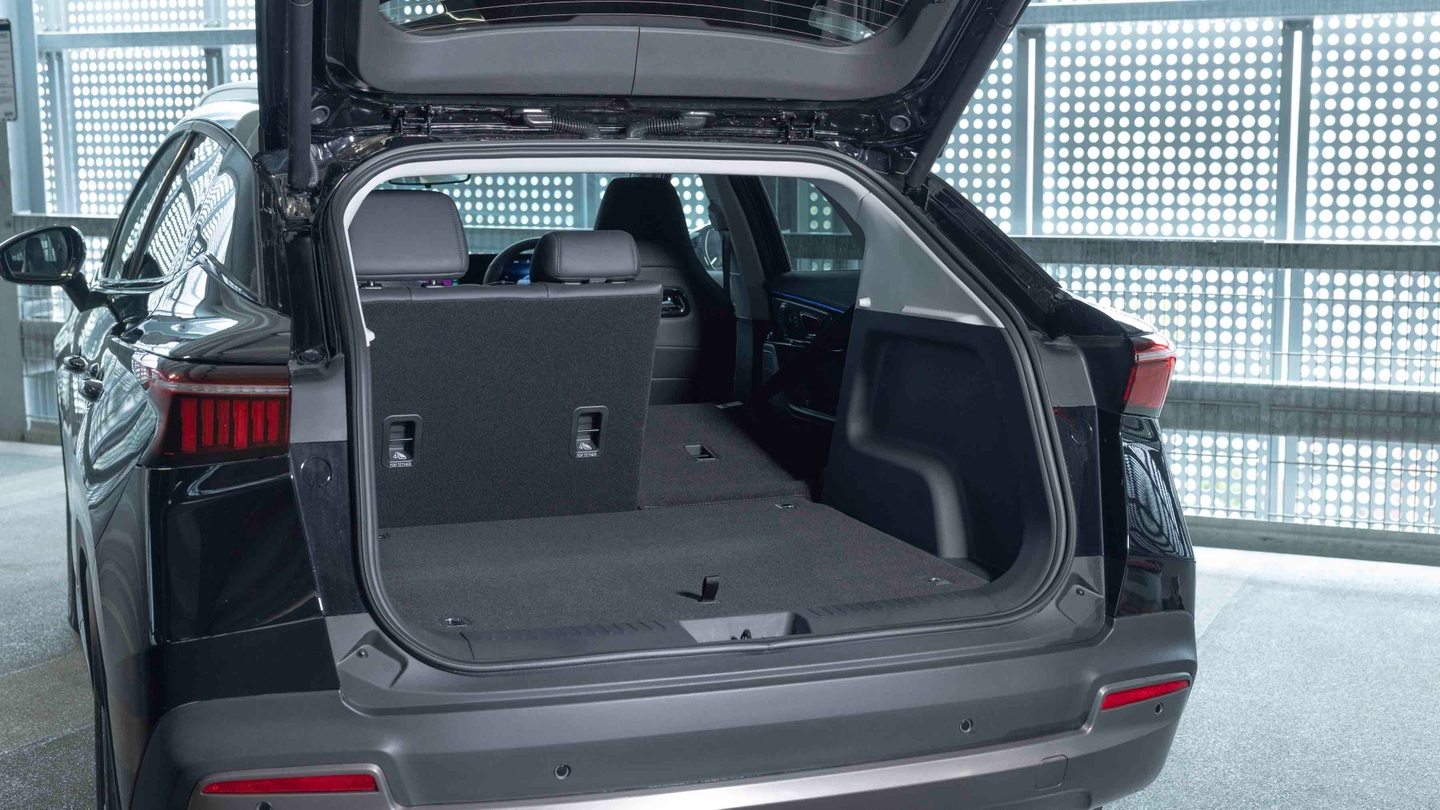
Omoda E5 Review
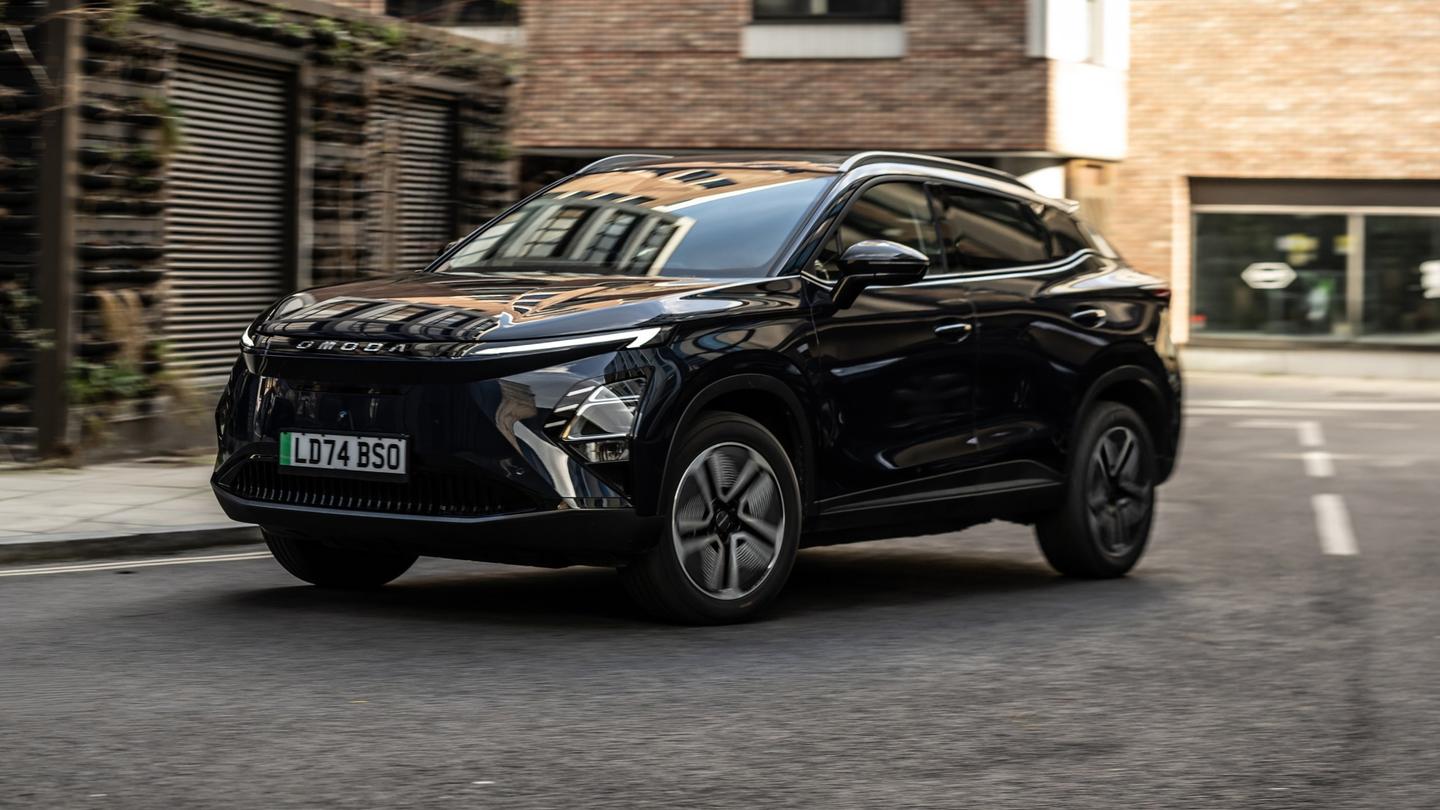
Omoda is pitching itself as a fashionable, youthful brand, and the E5 mostly hits the right notes with lots of tech and smart styling.
It’s clear that the driving experience is right at the bottom of the list, though – established rivals offer a far more polished feel on the road, and the E5 feels like it could benefit from some tweaking.
- Affordable
- Loaded equipment list
- Long warranty
- Average practicality
- Touchscreen not the most intuitive
- Best driven gently
Should I buy an Omoda E5?
If you look through the vast array of small electric SUVs on the market and decide none of the established brands are quite right for you, you might be quite taken with the Omoda E5.
It looks smart, with trendy slim daytime running lights perched above deep-set headlights and puffed-up SUV haunches. The shape is quite coupe-ish, almost reminiscent of the Toyota C-HR, while the rear end gets intricate LED lights that seem to reach right across the tailgate. E5s get a smoother front end than the petrol Omoda 5, which boasts a blingy (chintzy?) grille.
"We really like the 360-degree 3D camera that shows you a real-time view of the car in its surroundings. It’s impressively rendered, albeit no more useful than simply looking at what’s around you with your eyes"
Inside, the interior feels premium at first glance, and there’s all the tech you could possibly wish for as standard. The new Chinese car brands like Omoda are making European carmakers look stingy and overpriced.

Not that the E5 is particularly strong value as a new car. While the petrol 5 starts from under £24,000, the E5 is some £9,000 more expensive. However, after a year there’s a price parity, and both are available in the low £20k region on the used market.
Even then, the E5 doesn’t have the market to itself – for similar money you could buy a Peugeot e-2008, Fiat 600e, Jeep Avenger, BYD Atto 3, Hyundai Kona or Kia Niro EV, all with comparable ages and mileages.
So a used E5 is pretty decent value, in terms of style, range and gadgets, and it comes with an impressive seven-year warranty. But it’s not perfect. The boot is a bit small for the size of the car, the rear seats are a little cramped and the driving experience isn’t as sophisticated as European or Korean alternatives.
Interior and technology
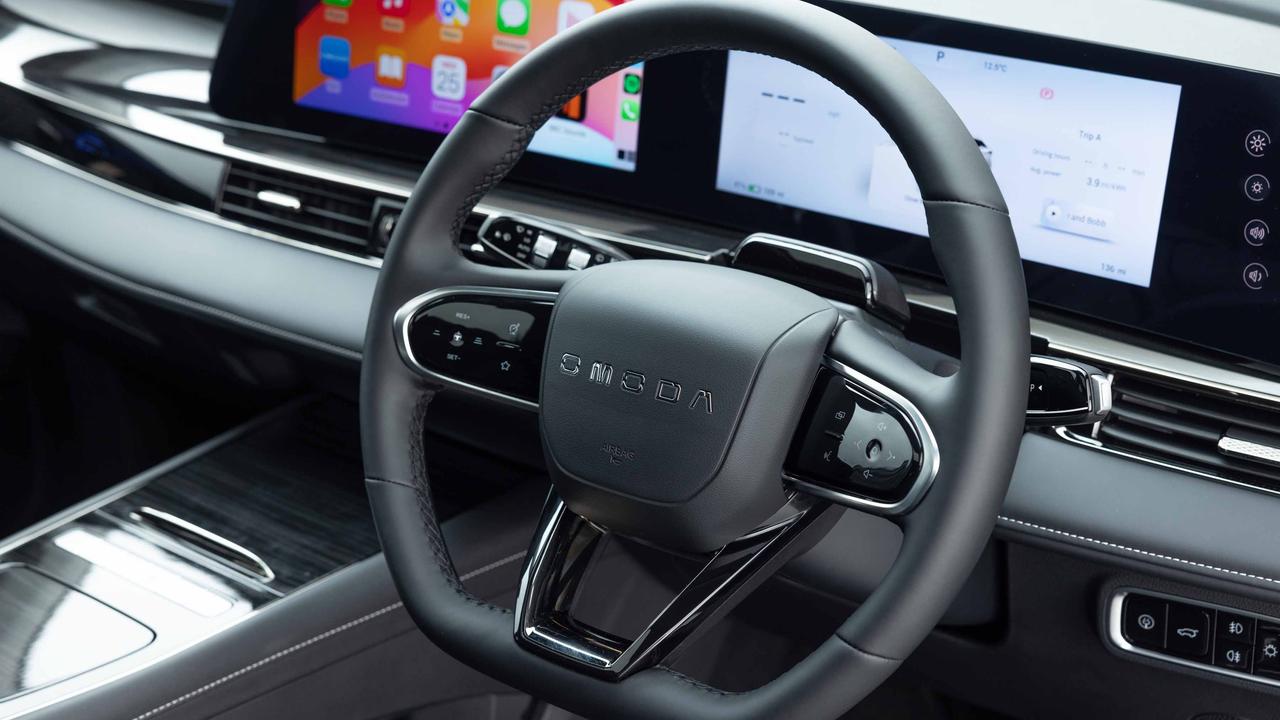
The interior layout is modern, but ultimately very generic – cover over the Omoda lettering on the steering wheel and you could be in anything from BYD, Kia, Mercedes or Vauxhall.
You get the twin 12.3-inch screens as standard. They’re quick to respond and pleasant to look at, and come with a host of functions such as finding local charging stations (and showing whether they’re available) and an online voice assistant.
Said voice assistant may come in handy in getting to the menu screen you want, because some submenus are a bit difficult to work out. Main functions are well laid out on a menu of widgets, but we’re already a bit fed up with Chinese carmakers’ insistence on filling the home screen with some otherworldly image and cramming all the functions onto a scrollable bar at the bottom. It’s really not the best way to get to those areas.
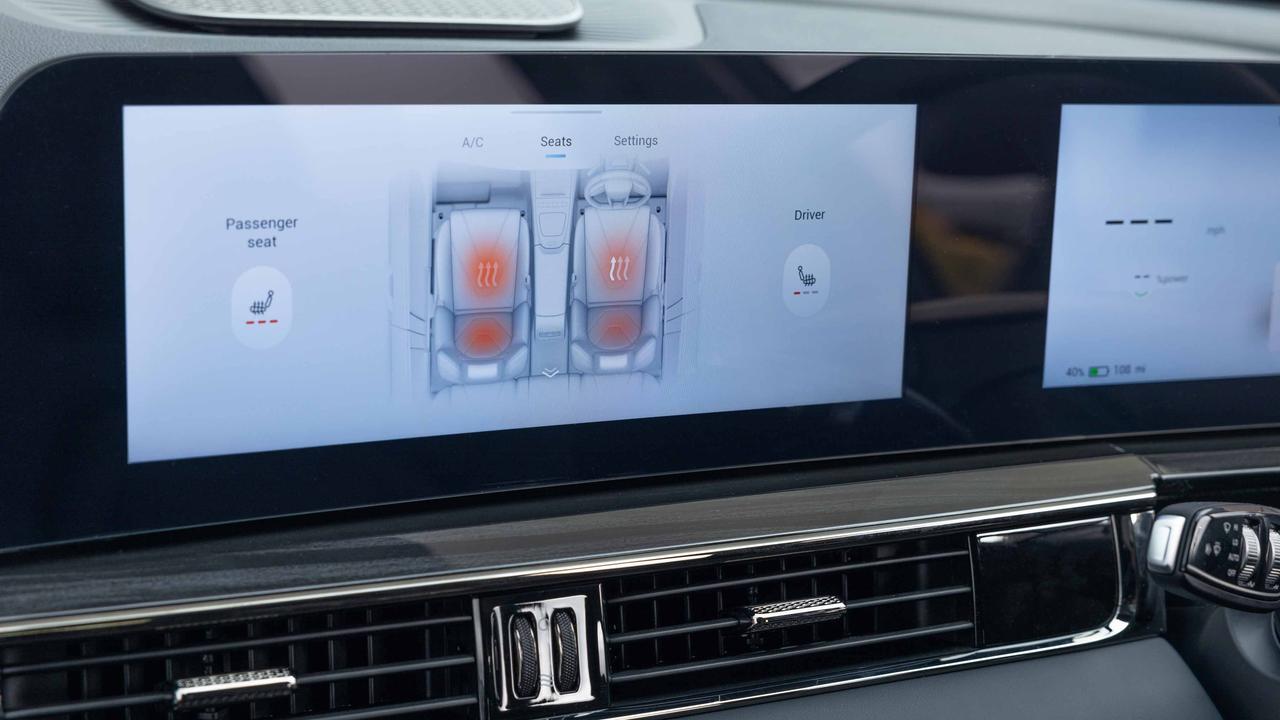
Similarly, it’s a bit of a faff to adjust the climate control or turn off the driver assist settings. The menu of settings is vast, and it’ll take several long looks at the screen to take them all in.
The driver’s screen is slightly better, because the main info is clearly displayed. It’s fairly easy to configure the screen to show relevant information, and we like that you can have a full map showing on the screen if you wish – it’s something that Audi has just taken out of its latest cars.
We also really like the 360-degree 3D camera that shows you a real-time view of the car in its surroundings. It’s impressively rendered, albeit no more useful in most situations than simply looking at what’s around you with your eyes.
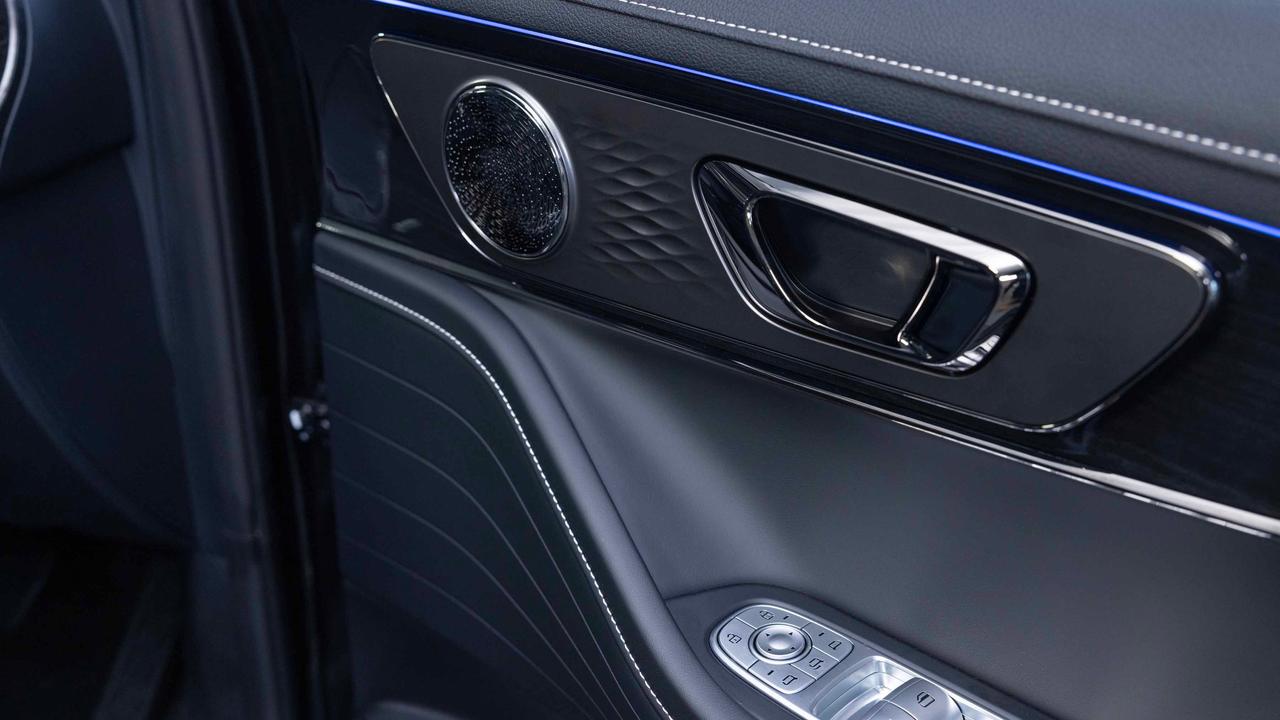
The E5’s interior looks premium. It’ll make you feel good about yourself as long as you don’t touch much of it. Do so and it becomes clear that the leather, wood and metal trim pieces aren’t completely convincing. It’s superficial quality.
Mind you, we’ve said similar things about recent Mercedes models.
As we write this, the trim levels are called Knight and Noble. Knight kicks things off with LED lights all-round, synthetic leather seats with power adjustment for the driver, heated front seats, a cooled wireless phone charging pad and push-button start. An eight-speaker Sony sound system is also fitted on electric Omoda 5s, so you can listen to the KPop Demon Hunters soundtrack in crystal-clear detail.
Noble takes it up several notches with a sunroof, ambient lighting, a heated steering wheel, cooled front seats and air purification. The passenger seat also gets electrical adjustment, although there’s no height adjustment available, which is disappointing – and a little odd considering the ridiculous amount of adjustment in the height of the driver’s seat.
Practicality

The Omoda 5 has pretty similar dimensions to a Nissan Qashqai, but its sleek shape means it’s not quite so practical as the Nissan.
Rear-seat legroom is good, while headroom is adequate unless you’re very tall. There’s the usual grab-bag of storage areas and USB sockets, plus an air vent. However, visibility from the back seats leaves a bit to be desired, with the bulky one-piece front seatbacks and intrusive C-pillar making it feel a bit dark and cramped back there.

The boot is on the small side at 380 litres, although that’s with a full-size spare wheel under the boot floor – something that’s incredibly rare these days!
Upfront storage is more impressive. The glovebox and door bins are a good size, there’s a usefully large storage zone beneath the cupholders and space for two phones ahead of them.
Range and performance
There’s just the one battery and motor option in the E5 – a 61kWh battery linked to a 204hp electric motor. Figures are good if not outstanding: the quoted range is 257 miles and the 0-62mph sprint takes 7.2 seconds. On our test drive, it seemed like the E5 would be able to get close to its range estimate in real-world driving, which means it’ll offer plenty of range for the majority of drivers.
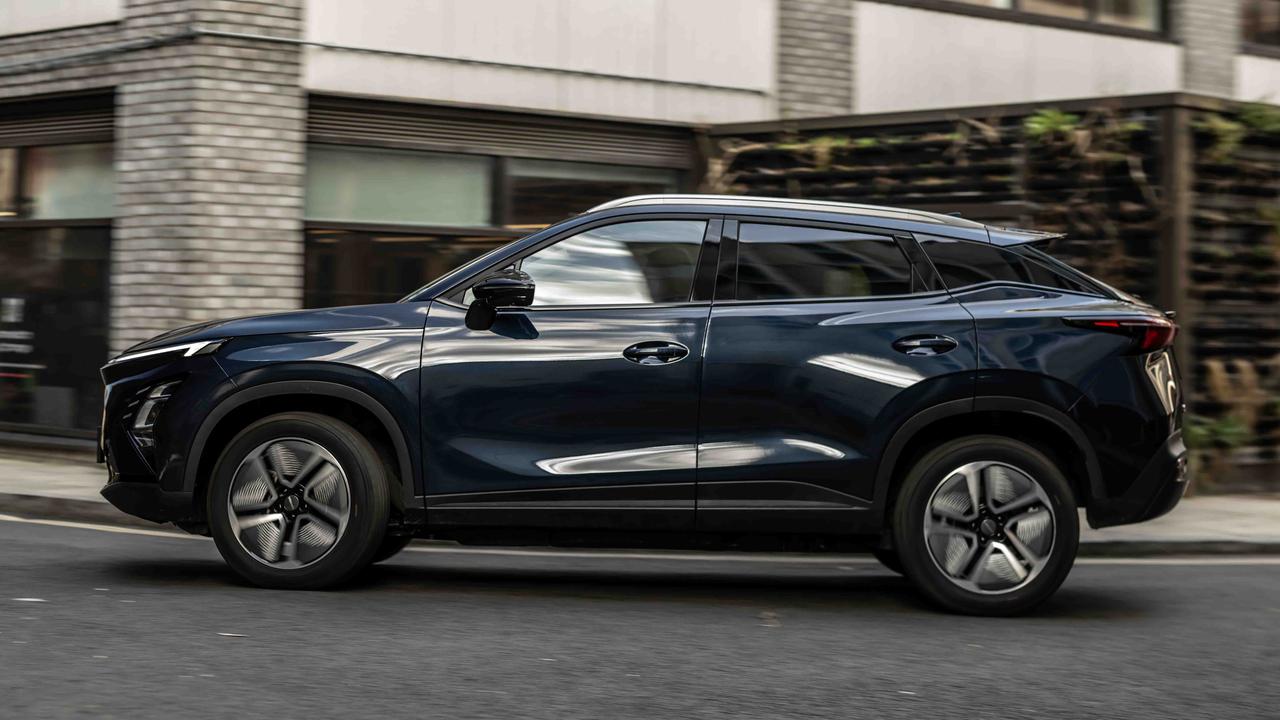
Acceleration is nippy and smooth, because there’s no lazy gearbox like in the petrol version. You’ve just got to watch out for a bit of wheelspin in wet conditions or in corners – the front wheels have to meter out the power and do the steering, and sometimes the instant hit of power is a bit much for them. It’s at this moment that you can tell the E5 isn’t exclusively electric – its platform also has to be used for a petrol car, whereas ground-up EVs don’t tend to suffer from momentary lapses of grip like this.
Insurance costs are a little high for both the petrol and electric models, perhaps because the brand is so new to the UK. But at least the E5 can be very cheap to run – charging from a home wallbox can cost just a few pounds on the right tariff. The petrol Omoda 5, meanwhile, only returns 31mpg, which is staggeringly poor next to the 44mpg that the Qashqai promises. Road tax for both models is the standard rate, currently £195 per year.
If you’ll be leaning on the public charging network, the E5’s fast-charging speeds aren’t amazing. It only maxes out at 80kW – some way short of the Skoda Elroq’s 165kW maximum – which means a 30-80% top-up will take around half an hour. Skoda quotes 24 minutes for 0-80%.
Driving and comfort

As a tool for getting to places, the Omoda E5 is decent enough. It’s easy to drive and you can lean on the power of the electric motor to get out of junctions hastily and nip into gaps.
On the motorway, there’s a bit of road noise, but otherwise it’s fairly comfortable and the ride quality isn’t likely to annoy you. The E5 has been tweaked for European roads, and it has a softness that filters out lumpen road surfaces – although sharp impacts do make themselves known in the cabin.
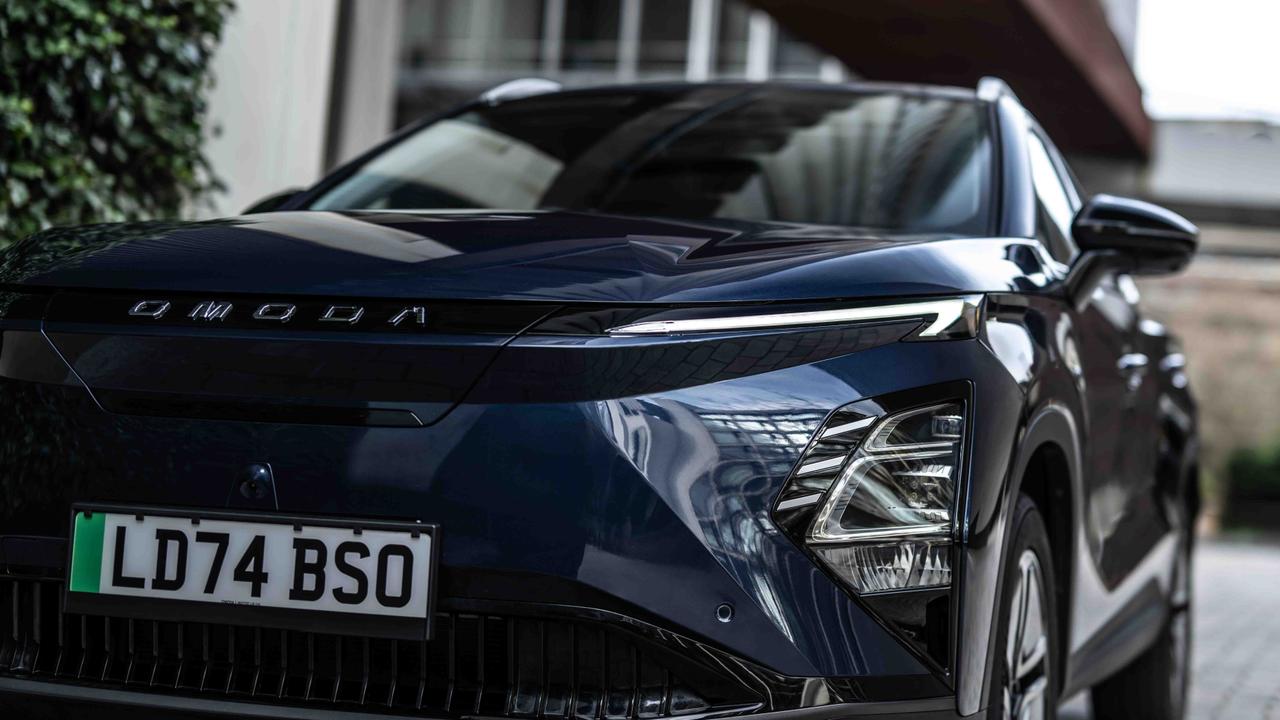
The soft setup makes the body lean somewhat in corners, so it’s not one to drive quickly on a B-road. The steering is light but quite natural, so at least it doesn’t feel like the wheels and steering are two separate entities.
The brakes are either on or off – the pedal is a bit snatchy, but somehow a bit soft-feeling as well.
Of course, you get plenty of driver assistance features – almost all of which come as standard. That includes auto emergency braking, lane-keep assist, blind-spot monitoring, adaptive cruise control and a driver monitor system. Unfortunately, not all of them are particularly easy to turn off, requiring a deep dive into the infotainment system, and you have to have the steering assist on if you want the adaptive cruise control on.






























